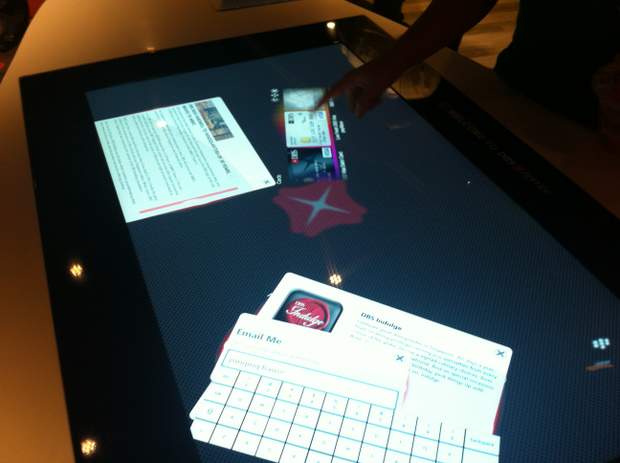DBS, Microsoft partner to boost customer service

SINGAPORE--DBS Bank has deployed five Microsoft PixelSense table-top multitouch systems in one of its branches here, which it believes will bring better customer interaction and efficiency.
During the briefing held here Thursday, Koh Cheng Hwee, senior vice president of head of franchise for DBS Bank's consumer banking group, said it hopes to bring more interactivity to its customers' banking experience with the interactive surface computing platform.
So, instead of sales representatives pushing various pamphlets to prospective customers to promote the bank's products, they can now pull up and show the information to multiple parties on the 40-inch table-top system, Koh explained.
DBS also chose the system for its object recognition capabilities, he said. The PixelSense technology allows the screen to detect up to 256 unique "symbols", which would then retrieve relevant information associated with each symbol. In a demonstration during the briefing, a bank representative laid different credit cards with symbols attached to it on the touchscreen, which led to pop-up windows appearing describing the various cards and the features and promotions they offer.

Bernard Tham, account manager for financial services industry at Microsoft's enterprise and partner group, who was also at the briefing Thursday, said the PixelSense system has a central content management system, which immediately updates the products' information. This eliminates the risk of representatives sharing details which are outdated, he noted.
Jamieson Yu, director of hardware for Microsoft Asia-Pacific, pointed out the Pixelsense product was rebranded from its former name, Microsoft Surface 2.0. This is because the "Surface" brand is now used to promote the software giant's tablet devices, he explained.
The change in branding is also apt as it better captures how the technology is used. Unlike capacitive touchscreens, Pixelsense is a vision-based system that uses light to detect and respond to touch and objects, Yu said.
He noted the system DBS Bank had procured is the Samsung SUR40 with Microsoft Pixelsense, and it retails for S$14,900 (US$12,112). But as customers usually need customized apps for the system, the actual price will vary, he added.
The local bank has deployed five such systems at its Remix bank branch in the National University of Singapore. Remix branches are aimed at the youth, and the NUS branch was opened this September, Koh said.
Yu said the DBS deployment of PixelSense is one of the largest deployments in Asia, and other industries such as hospitality and tourism, automotive, and education are in the process of implementing the technology too.